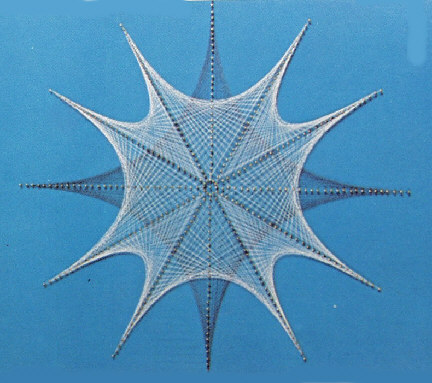| This is a string composition of
straight lines (fig.21). All lines are of the same length, meet at the
center point, and have the same number of brads.
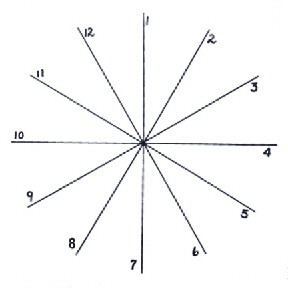
Figure 21 Web design pattern
This design is excellent for either
a square or rectangular shaped board. The lines may be any length with
brads at least 1/4 inch apart. The threading pattern is interesting and
pleasing to the eye.
Approximately 225 to 250 yards
of sewing thread are required for the project shown here. The overall dimensions
of the board used here are 16" X 24"; the design is 16" X 16". The brads
are placed about 1/4" apart.
Figure 21 shows the inner section
of the full-size Web pattern. Note the numbering of brads 1 to 19 in Figure
22; number your brads consecutively, using the illustration as a guide.
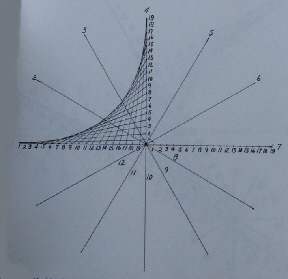
Figure 22 Web line
1 with line 4 threading pattern. Lines 8 through 12 have been shortened
for purposes of illustration.
The design is modern and can be
strung with two different colors of thread or with one color. If you wish
to work with two colors, lines 1-4,
4-7,7-10, and 10-1 would be strung
with one color; all the others would be strung with the second color. If
you're working with one color, the background fabric should be a good contrast
with your string.
To make the project shown here
in the color section, you will need medium blue felt for the background;
dark blue polyster thread for stringing lines 1-4, 4-7, 7-10, and 10-1;
and light blue polyester thread for stringing the remaining sections.
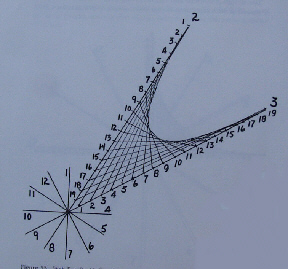
Figure 23 Web line 2 with line 3 threading
pattern. All other lines have been shortened for purposes of illustration.
Making Your Design Pattern
To enlarge the pattern for this
design, trace Figure 21 and extend lines 1 to 12 to 10" (as in the project
shown here) or to whatever length you wish to work. Now number the lines
1 to 12, following the pattern in Figure 22.
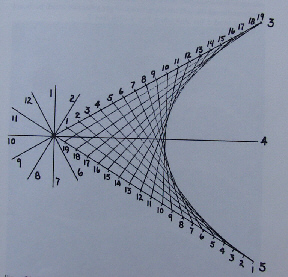
Figure 24 Web line 3 with line 5 threading
pattern. All other lines have been shortened for purposes of illustration.
Working the Threading Patterm
The threading pattern for this project
is the one-to-one correspondence method; string from brad 1 to brad 1;
1-2; 2-2; 2-3; 3-3; 3-4; 4-4; 4-5;
5-5; 5-6; 6-6; 6-7; 7-7; 7-8; 8-8;
8-9; 9-9; 9-10; 10-10; 10-11; 11-12;
12-12; 12-13; 13-13; 13-14; 14-14;
14-15; 15-15; 15-16; 16-17; 17-17;
17-18; 18-18; 18-19; 10-19; and
so on. Tie off.
Note: The center brad is not invilved
in the threading pattern; it is left free of thread.
1. Begin by
working this threading pattern as follows; line 1 with line 4 (Fig. 22);
line 4 with line 7; line 7 with line 10; line 10 with line 1, Tie off.
2. Now thread
line 2 with line 3 (Fig. 23); line 3 with line 5 (Fig. 24); line 5 with
line 6; line 6 with line 8; line 8 with line 9; line 9 with line 11; line
11 with line 12; line 12 with line 2. Tie off.
As you move from section to section,
the numbering of the brads changes. For example, after you thread line
1 with line 4 and are ready to thread the next section, brad 19(or your
last brad) on line 4 becomes brad 1 for threading line 4 with line 7.
Follow the one-to-one correspondence
method (1-1; 1-2; 2-2; 2-3......
18-19; 19-19;) until all lines
are strung |
